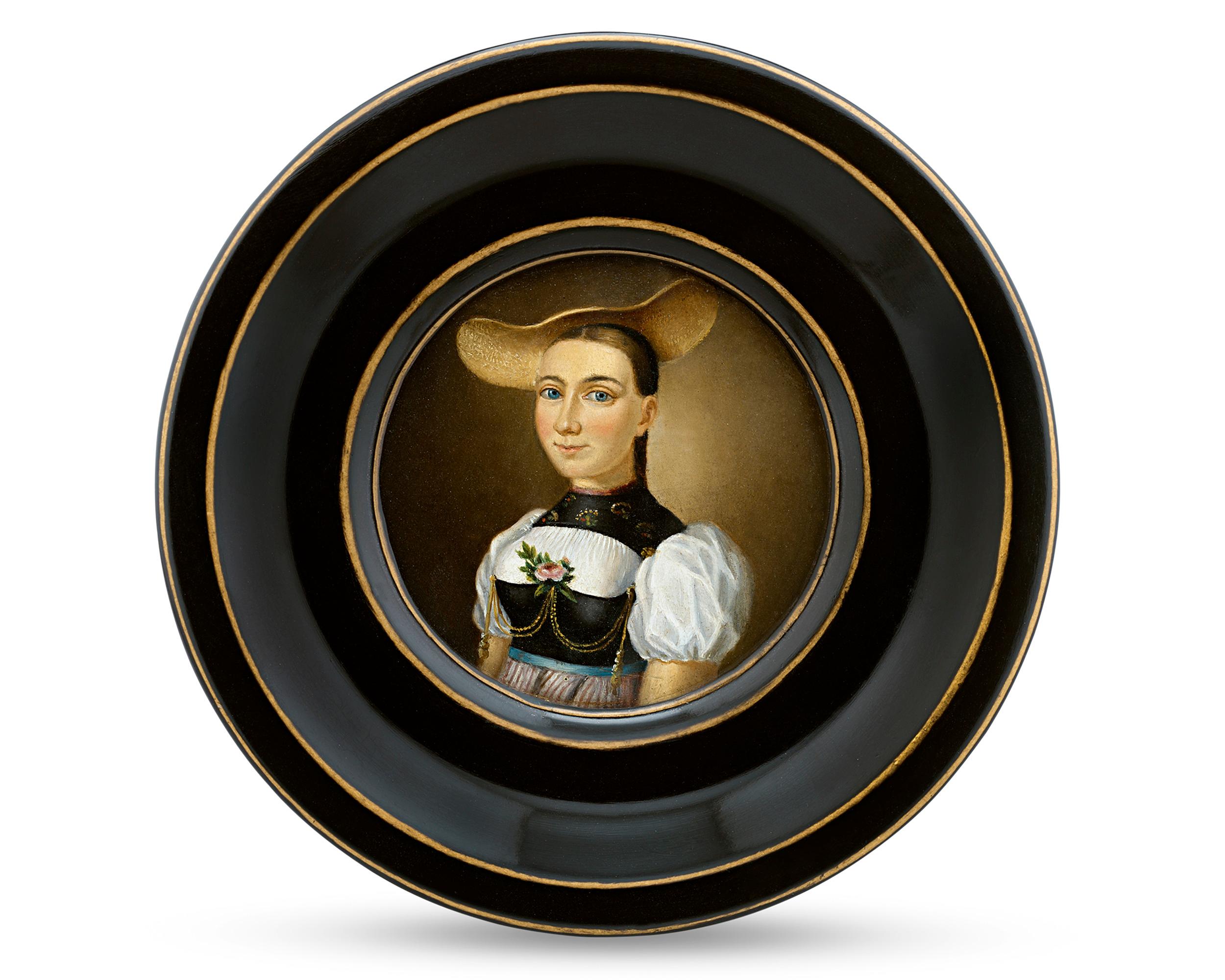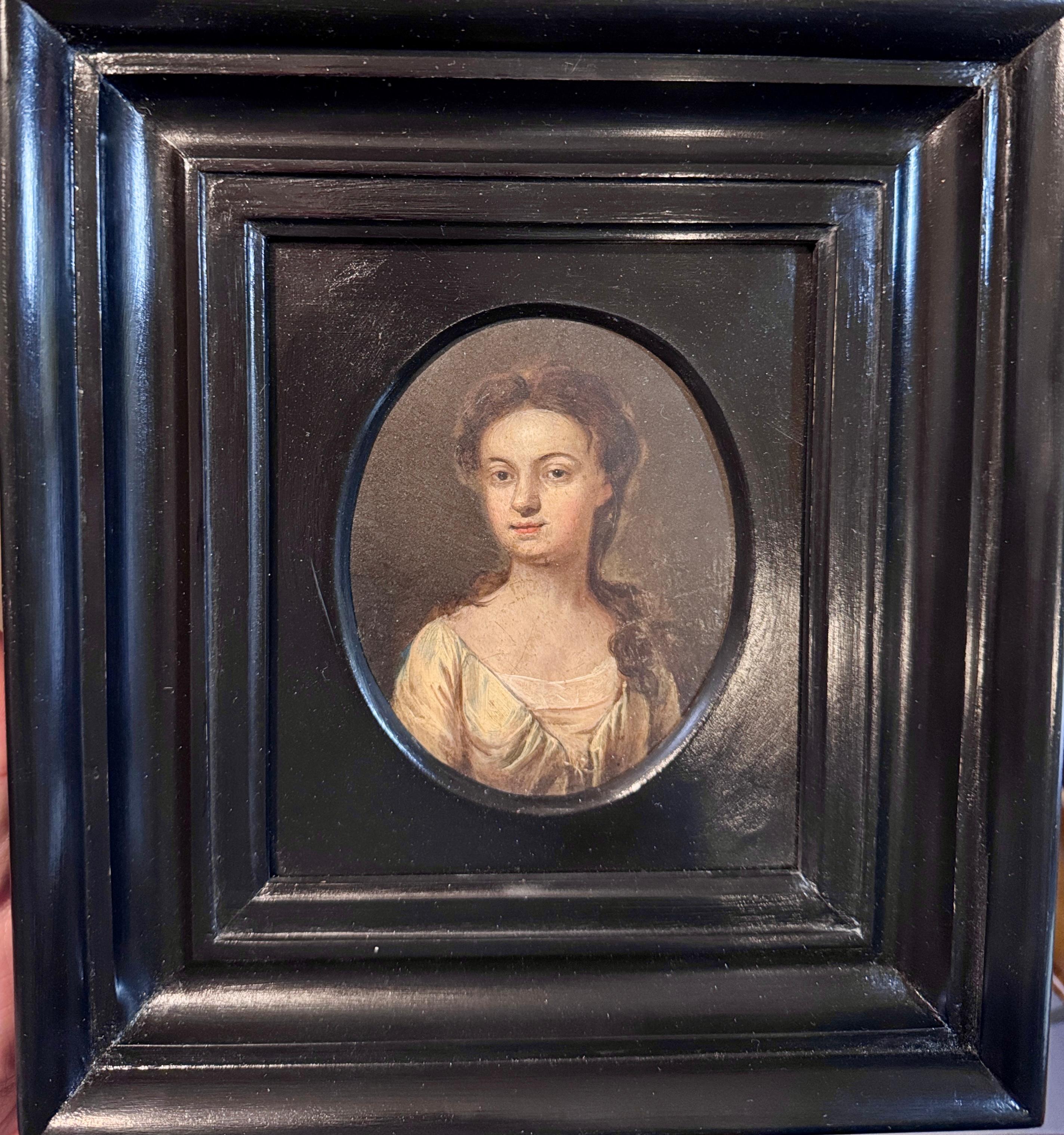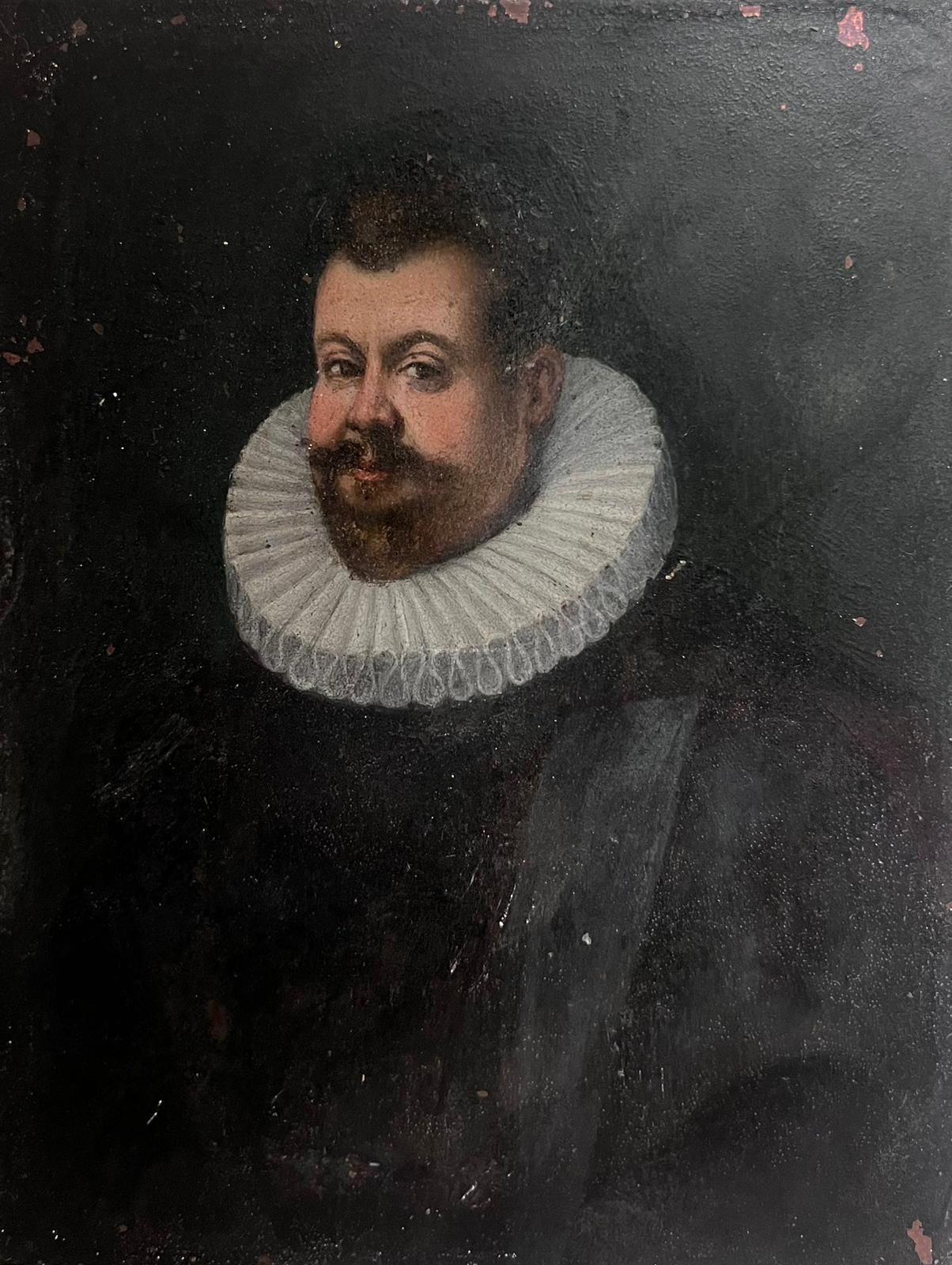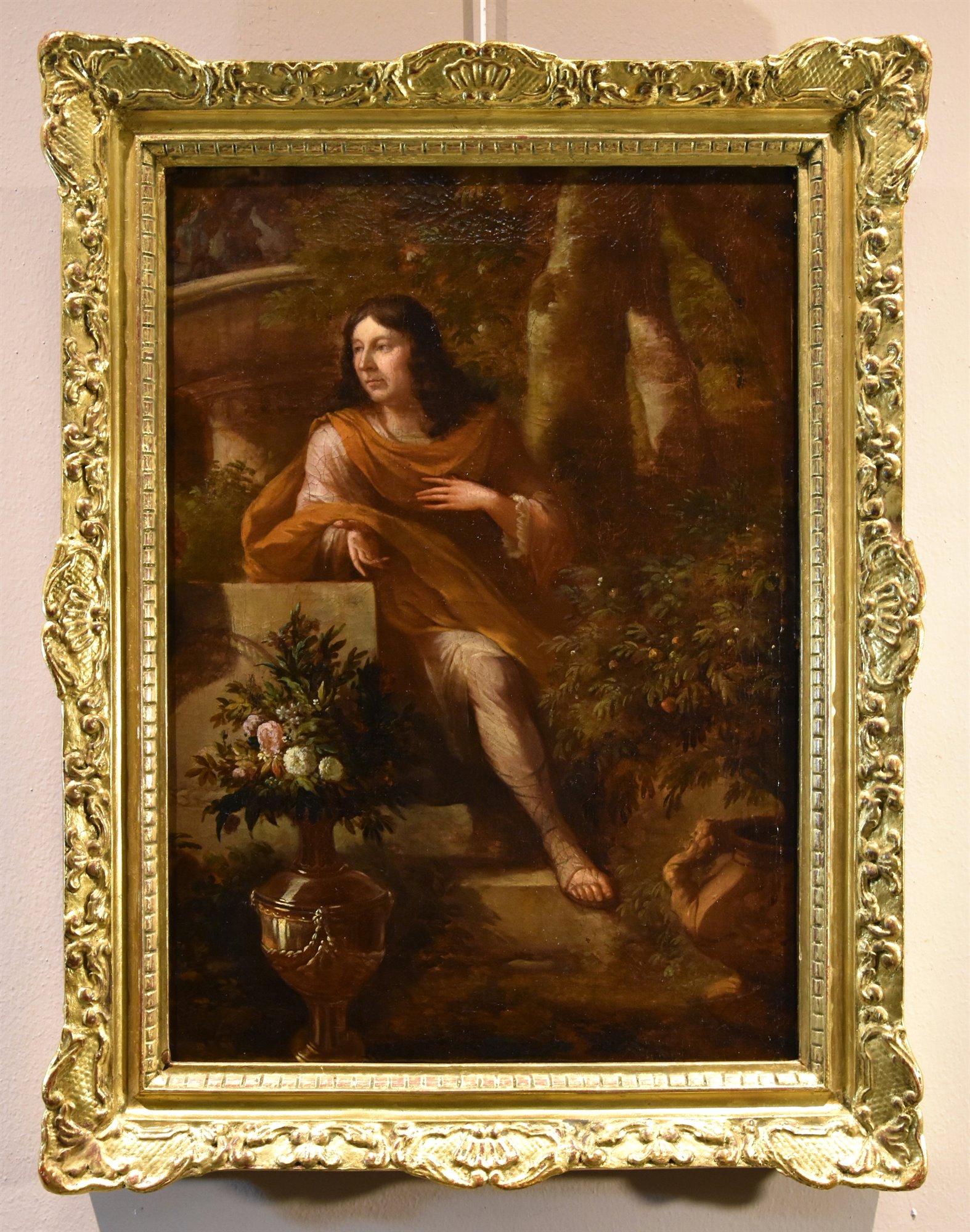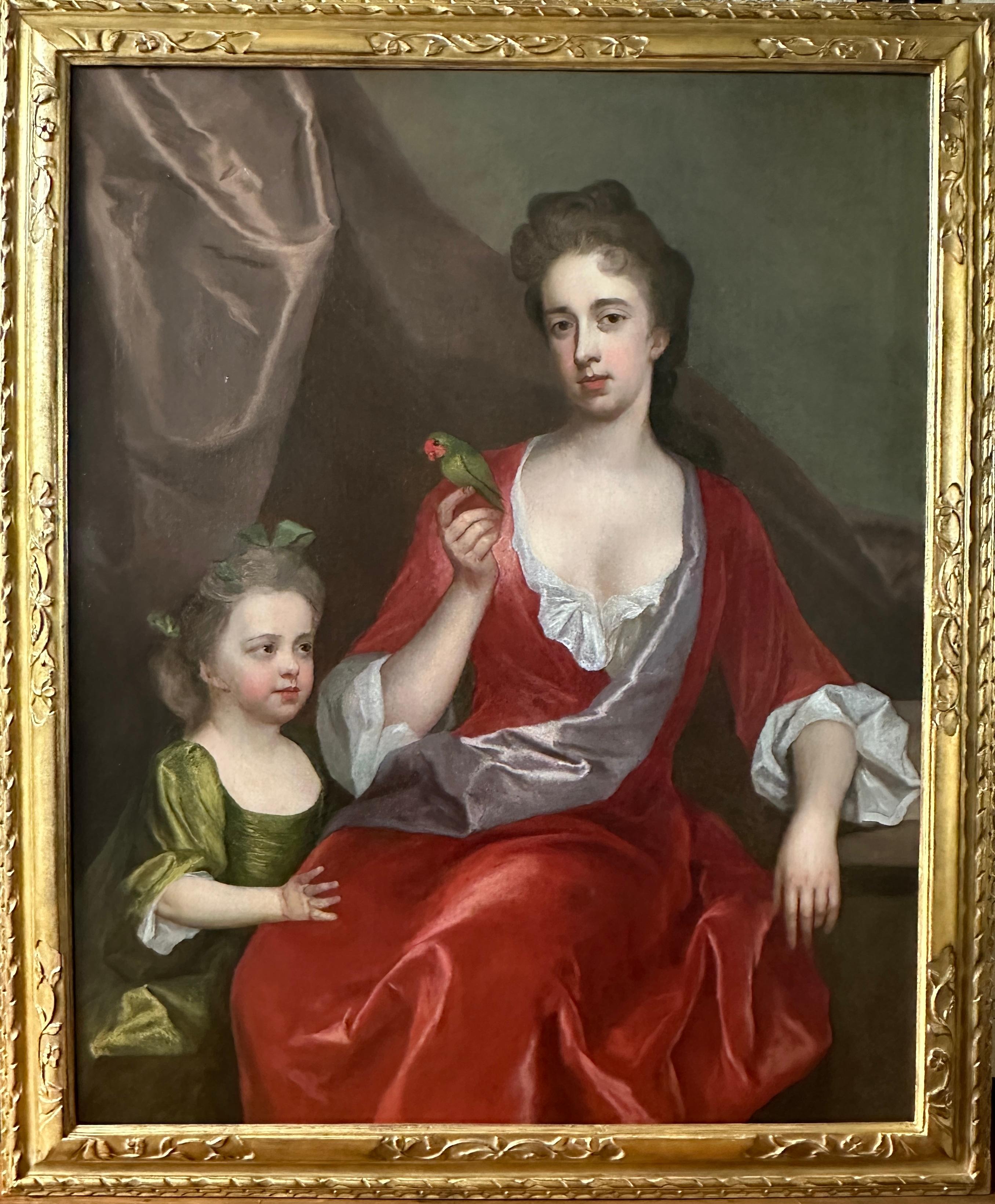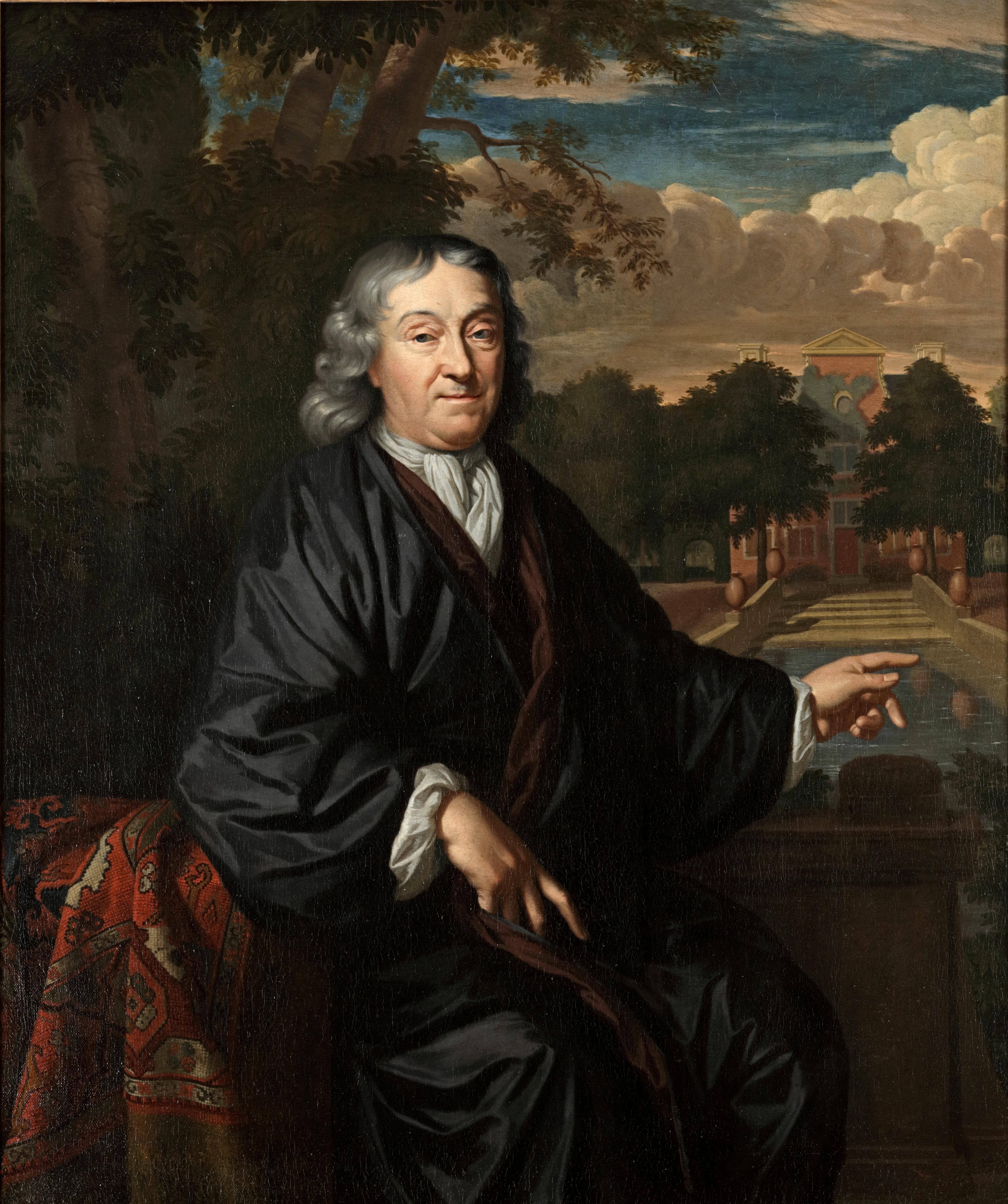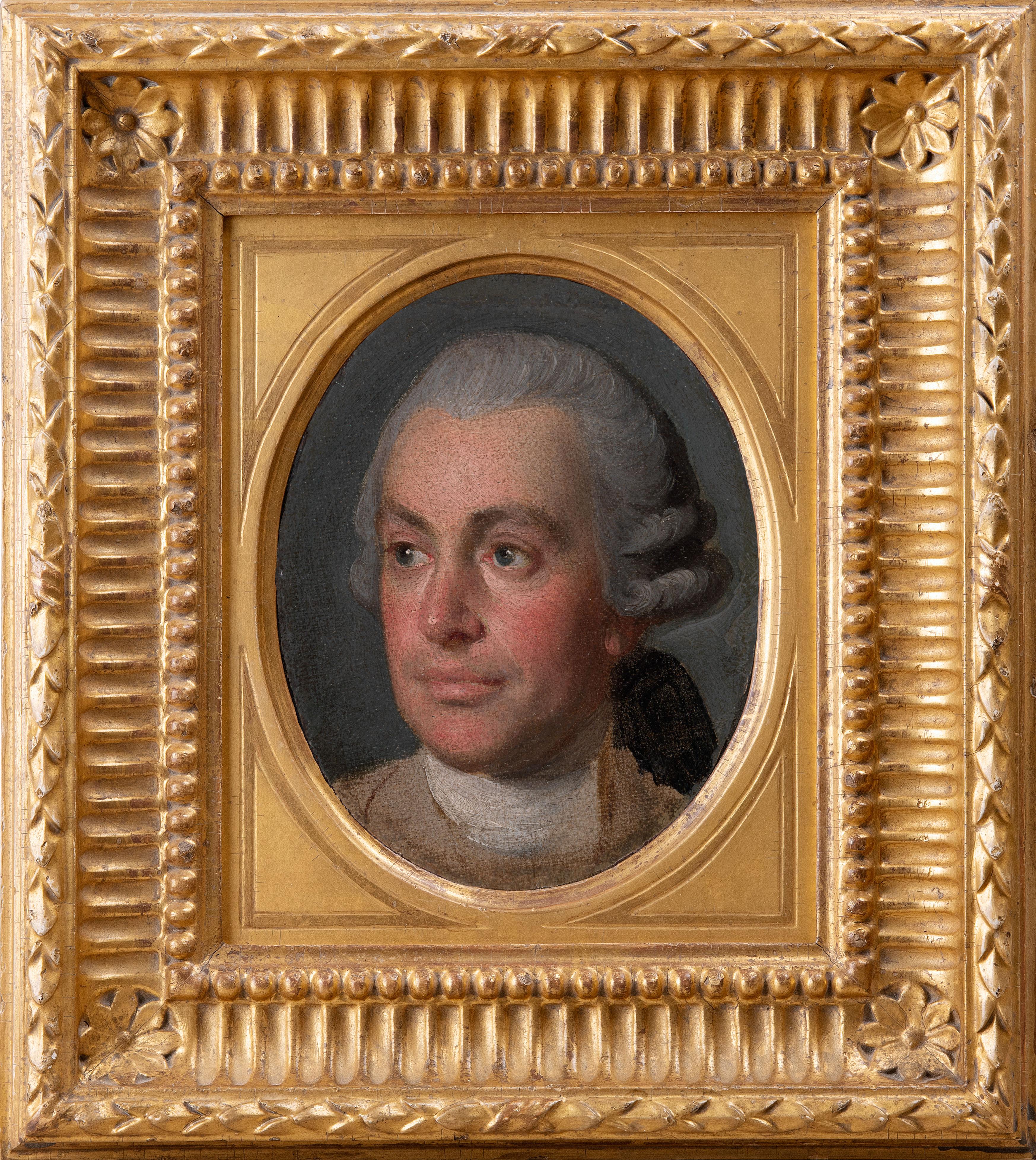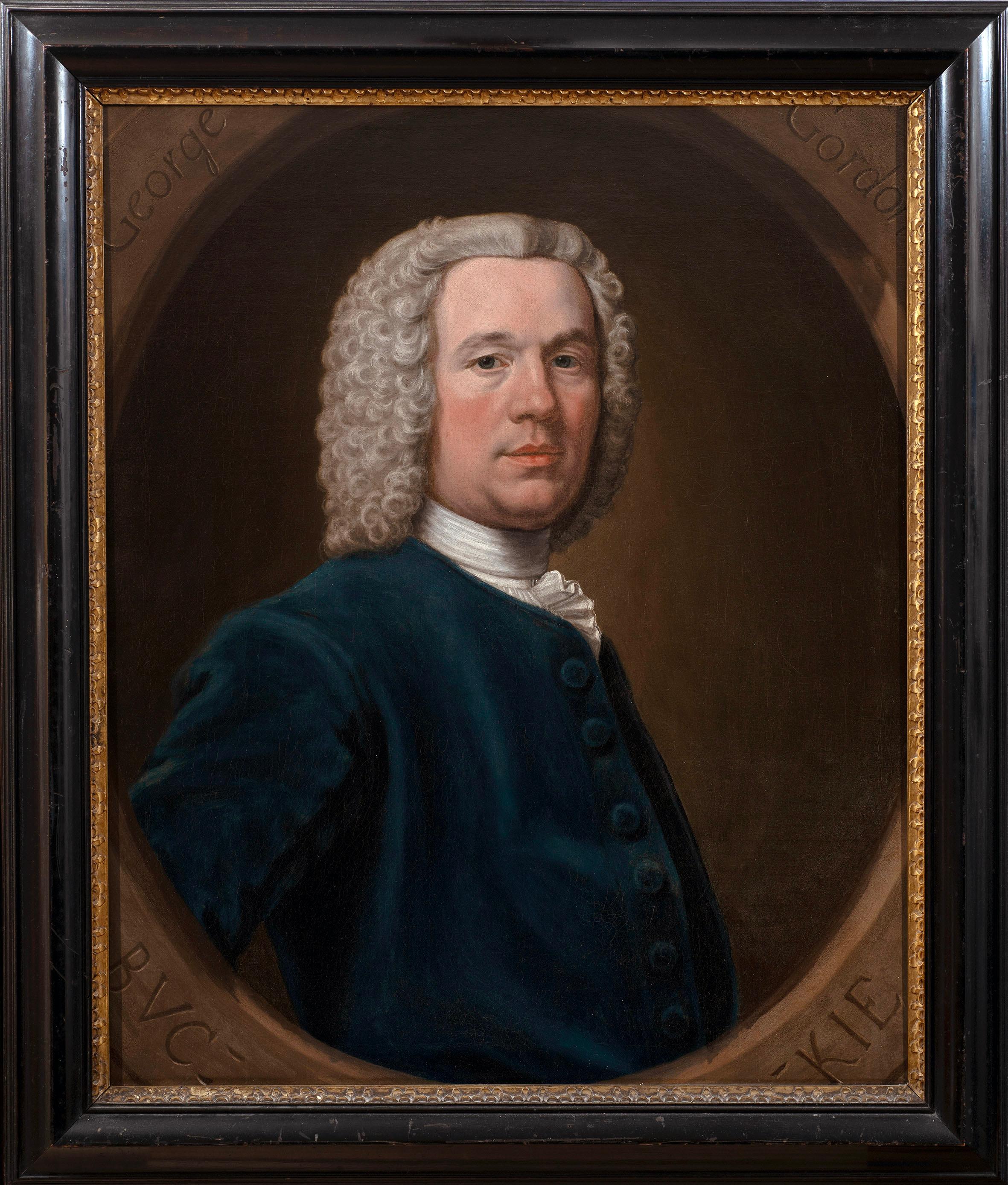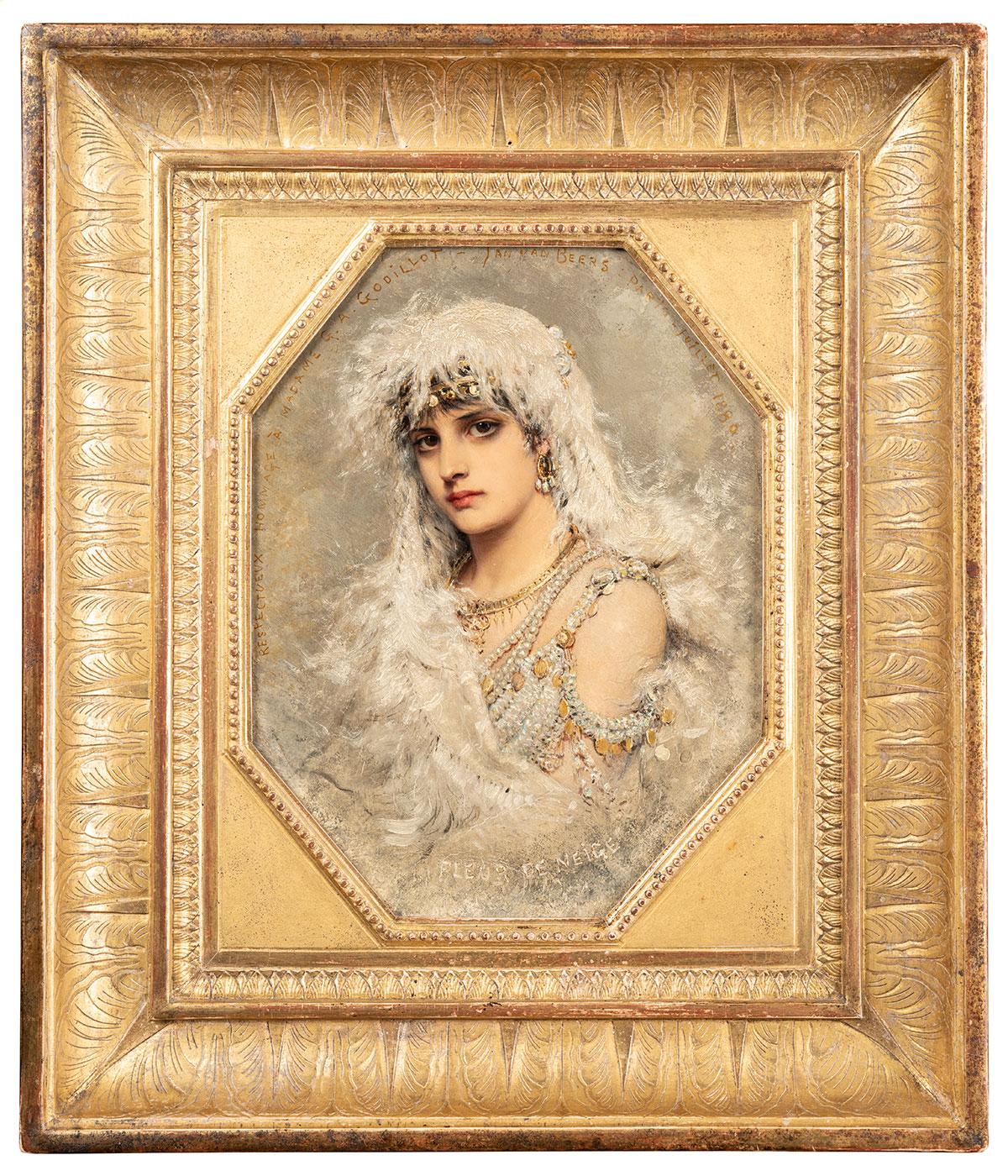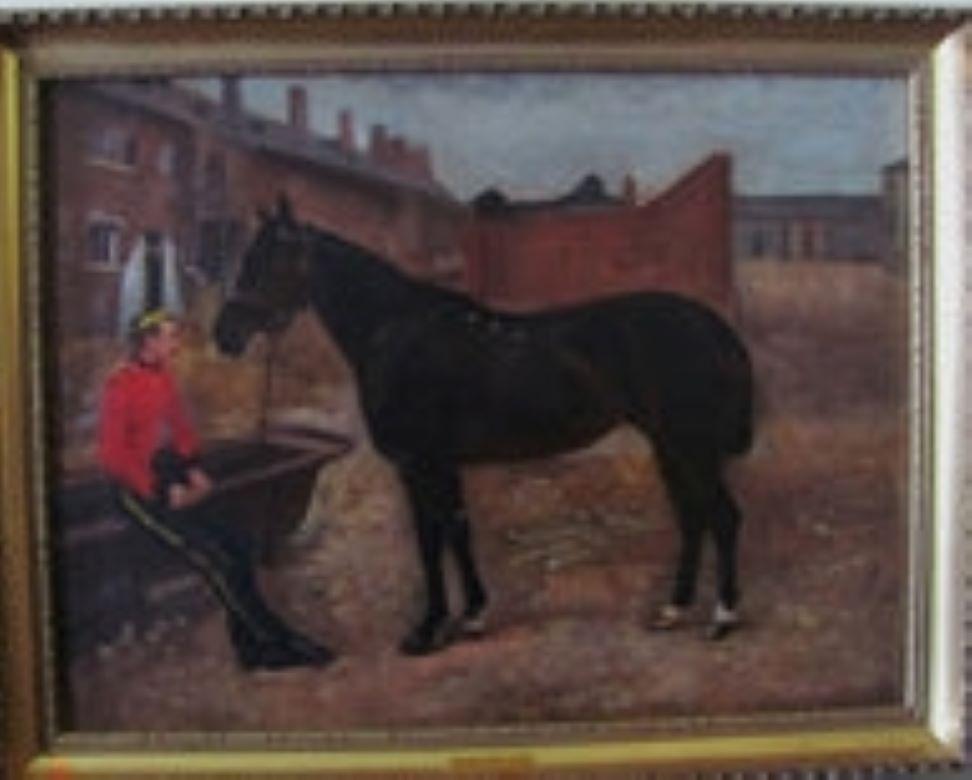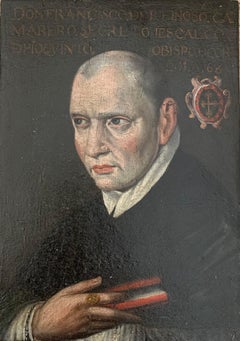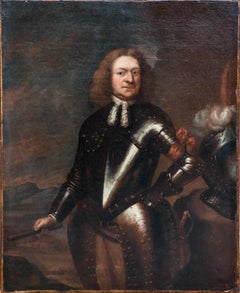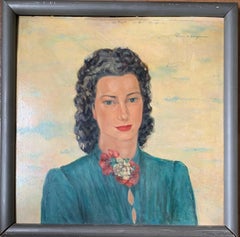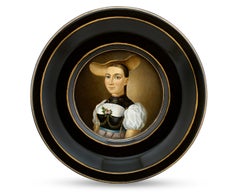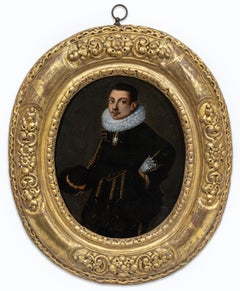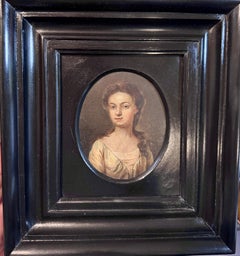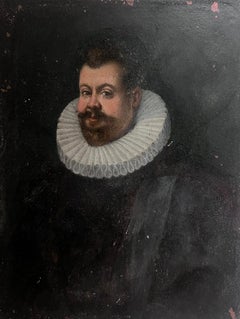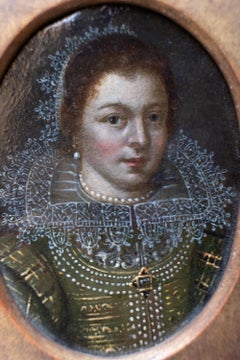
Presumed Portrait of Amalia von Solms, Circle of Michiel Jansz VAN MIEREVELD
View Similar Items
Video Loading
Want more images or videos?
Request additional images or videos from the seller
1 of 13
Presumed Portrait of Amalia von Solms, Circle of Michiel Jansz VAN MIEREVELD
Price:$1,678.77
$2,000List Price
About the Item
- Dimensions:Height: 5.83 in (14.8 cm)Width: 4.45 in (11.3 cm)
- Medium:
- Movement & Style:
- Circle Of:Michiel Jansz VAN MIEREVELD (1567 - 1641, Dutch)
- Period:
- Condition:
- Gallery Location:Firenze, IT
- Reference Number:1stDibs: LU2464215236442
About the Seller
4.9
Vetted Professional Seller
Every seller passes strict standards for authenticity and reliability
Established in 2016
1stDibs seller since 2023
80 sales on 1stDibs
Typical response time: 6 hours
Authenticity Guarantee
In the unlikely event there’s an issue with an item’s authenticity, contact us within 1 year for a full refund. DetailsMoney-Back Guarantee
If your item is not as described, is damaged in transit, or does not arrive, contact us within 7 days for a full refund. Details24-Hour Cancellation
You have a 24-hour grace period in which to reconsider your purchase, with no questions asked.Vetted Professional Sellers
Our world-class sellers must adhere to strict standards for service and quality, maintaining the integrity of our listings.Price-Match Guarantee
If you find that a seller listed the same item for a lower price elsewhere, we’ll match it.Trusted Global Delivery
Our best-in-class carrier network provides specialized shipping options worldwide, including custom delivery.More From This Seller
View AllSpanish school. Secretary of Pope Pius V, abbot of Husillos, bishop of Córdoba.
Located in Firenze, IT
Portrait of Francisco de Reynoso y Baeza.
Secretary of Pope Pius V, abbot of Husillos and bishop of Córdoba. Francisci de Reynoso.
Early 17th century.
Small-format portrait from the late Renaissance period.
Spanish school.
Size: Cm 19 x Cm 13.5
Oil on wooden panel.
On the back the fine tablet is strengthened (already in ancient times) by a sheet of parchment.
About 1600-1610.
As often in Mannerist / Late Renaissance portraits, the image of the character is accompanied by the writing that runs at the top, adding a celebratory, historicising touch to the effigy. Let's bring back the sentence here:
DON FRANCISCO DE REINOSO. CAMARERO SECRETO IESCALCO PIO QUINTO OBISCOPO CORDOBA. 68 (? O 7?)
(1534, Autillo de Campos, Spain - 1601, Córdoba)
Francisco de Reynoso was a Spanish cleric, chief chamberlain, and secretary to Pope Pius V, abbot of Husillos, and bishop of Córdoba.
He was the fourth of eleven children. His father was the seventh Lord of Autillo de Campos, and his mother was Juana de Baeza y de las Casas, daughter of Manuel de Baeza, a lawyer of the Royal Council and at the Court of Valladolid.
Francisco de Reynoso was deeply devoted to the Virgin Mary and showed a strong inclination toward religion and piety from an early age.
He studied Latin, arts, and theology at the University of Salamanca.
In 1562, he traveled to Rome with his brothers Pedro and Luis.
In January 1566, following the death of Pope Pius IV, Cardinal Antonio Michele Ghislieri was elected pope, becoming Pius V. From this period until Ghislieri's death in 1572, Francisco de Reynoso served as his chief chamberlain and secretary.
After Pope Pius V died, Francisco de Reynoso returned to Spain and lived for several years in the city of Palencia, where his brother Manuel was a canon.
He supported the Society of Jesus when it was established in Palencia, providing alms to the school's clergy and funding chairs of Letters and Theology at his own expense, as well as donating a significant number of books.
During the brief outbreak of the Black Plague...
Category
17th Century Old Masters Portrait Paintings
Materials
Parchment Paper, Oil, Wood Panel
Portrait of Raimondo di Montecuccoli in armor with a marshal's staff. Circa 1660
Located in Firenze, IT
Portrait of Raimondo di Montecuccoli in armor with a marshal's staff. Dutch School.
Oil on canvas
Dutch School.
Circle of Peter Nason (Amsterdam, 1612 - 1690 The Hague).
Portrait of a military commander in armor with a marshal's staff.
In the portrait of the illustrious general Raimondo Montecuccoli, it can be observed that he still appears without the Order of the Golden Toson. This detail suggests that the portrait could be dated before 1664.
Raimondo Montecuccoli was a famous general and military strategist of the 17th century in the service of the Habsburg Empire. Born in 1609 in Italy, Montecuccoli fought in numerous European wars, distinguishing himself for his tactical and strategic abilities. He is best known for his victories during the Thirty Years' War and the war against the Turks. Montecuccoli is also remembered for his writings on military theory, which influenced subsequent generations of commanders. He died in 1680.
Montecuccoli came from a noble Italian family but chose to pursue a military career in the service of the Habsburg Empire. He studied in Vienna and fought in numerous battles and military campaigns, earning the trust of Emperor Leopold I.
Montecuccoli was known for his discipline, his ability to adapt to situations on the battlefield, and his skill in leading troops with cunning and determination.
Montecuccoli fought in many significant battles during the Thirty Years' War and the wars against the Turks. Some of his most famous battles include the Battle of Lens in 1648, where he achieved a decisive victory against French forces, and the Battle of Vezekény in 1664, where he defeated the Ottoman army. He faced adversaries such as the renowned French general Turenne and the great Turkish commander Kara Mustafa...
Category
17th Century Old Masters Portrait Paintings
Materials
Canvas, Oil
$2,195 Sale Price
32% Off
Free Shipping
Portrait of a woman with red jacket trimmed with fur and braid German School.
Located in Firenze, IT
Portrait of a woman with red jacket trimmed with fur and braid
German School, late 18th - early 19th century
Oil on canvas, 64 × 48 cm
Gilded wooden frame, not original
Dressed in a...
Category
Late 18th Century Old Masters Portrait Paintings
Materials
Oil, Canvas
Portrait of a Woman, 1940s-50s. Signed Vera d’Angara, Italian-Russian actress
Located in Firenze, IT
Portrait of a Woman, 1940s-50s. Signed Vera d’Angara, Italian-Russian actress
Technique: Oil on panel
Dimensions: Height 59 cm x Width 58 cm
Frame: Painted wooden frame
The portrait...
Category
Mid-20th Century Art Deco Portrait Paintings
Materials
Wood, Oil, Wood Panel
Self-portrait of the painter with beret and brush in hand, 1930s
Located in Firenze, IT
Self-portrait of the painter with beret and brush in hand, 1930s
Period: Circa 1930s
Italian school.
Technique: Oil on wooden panel
Frame: Painted wooden frame, coeval
Dimensions:
...
Category
Early 20th Century Art Deco Portrait Paintings
Materials
Oil, Wood Panel
Portrait of a Levantine Merchant, 18th Century. Italian school.
Located in Firenze, IT
Portrait of a Levantine Merchant, 18th Century
Italian school.
Oil on canvas.
Circle of Giuseppe Nogari (1699-1763)
Dimensions with frame cm 71 x 5...
Category
18th Century Baroque Portrait Paintings
Materials
Oil, Canvas
$1,917 Sale Price
20% Off
You May Also Like
German Miniature of Young Lady in a Fancy Hat
Located in New Orleans, LA
This charming German miniature painting, created of oil on copper, depicts a young woman wearing a large and lavish hat. With dark, braided hair and blue eyes, the sitter's cheerful ...
Category
19th Century Old Masters Portrait Paintings
Materials
Copper
Portrait of a Gentleman in Doublet & Ruff c.1595; Elizabethan oil on copper
Located in London, GB
Portrait of an Elizabethan Gentleman in a Black Doublet c.1595
Manner of Hieronimo Custodis (died c.1593)
Oil on copper
Unsigned
This exquisite oil on copper portrait, painted around 430 years ago, is a splendid survival from the Elizabethan era - the golden age in England’s history, when Queen Elizabeth I was on the throne. It is a time that is sandwiched between two golden ages of English renaissance culture, the reigns of Henry VIII and Charles I. This period produced a style of painting quite unlike that anywhere else in Europe and one that deserves serious assessment. Just a couple of years after our portrait was painted, English painting developed on another course, driven mainly by the artists Marcus Gheeraerts the Younger and Isaac Oliver; they depicted a new mood that was pervading Elizabethan and Jacobean society, which was that of romantic melancholy. Elizabethan painting...
Category
16th Century Old Masters Portrait Paintings
Materials
Copper
Oval 18th century Portrait of a Young girl, oil on copper
By (Follower of) Sir Godfrey Kneller
Located in Woodbury, CT
This exquisite 18th-century portrait depicts a young girl, delicately rendered in the style of Sir Godfrey Kneller, one of the most celebrated portrait painters of the Baroque period...
Category
1750s Old Masters Portrait Paintings
Materials
Copper
Fine 1700's French/ Dutch Oil Painting on Copper Portrait Man Ruff Collar
Located in Cirencester, Gloucestershire
Portrait of a Gentleman wearing a Ruff Collar
Dutch/ French artist, 18th century
oil painting on copper, unframed
copper board : 6.75 x 5 inches
provenance: private collection, UK
co...
Category
18th Century Old Masters Figurative Paintings
Materials
Copper
Portrait Gentleman Man Kneller 17/18th Century Paint Oil on canvas England
By Godfrey Kneller (Lübeck 1646 - London 1723)
Located in Riva del Garda, IT
Godfrey Kneller (Lübeck 1646 - London 1723) circle of
Portrait of a Gentleman in a Garden
Oil on canvas
67 x 47 cm.
Framed 84 x 64 cm.
The painting depicts a nobleman portrayed f...
Category
17th Century Old Masters Paintings
Materials
Oil
$6,105 Sale Price
20% Off
A portrait of a lady and her daughter with an exotic bird
By Michael Dahl
Located in Bath, Somerset
A portrait of a lady three-quarter length, seated in an interior, wearing a red silk gown draped in a pink silk sash with an exotic bird perched on her hand and one arm resting on a stone plinth, her young daughter wearing a green silk gown standing at her side.
Oil on canvas, housed in a period 'Lely' giltwood frame.
This double portrait was painted at the height of Dahl's career in circa 1715 when Dahl had become firmly established as one of the leading portrait painters in Britain. Although the identities of the sitters are currently unknown, it is a sensitive depiction of a close and affectionate bond between a mother and daughter, with the young girl's hand resting affectionately on her mothers lap. The tamed exotic bird adds a charming decorative element which also serves to convey the high social status of the lady, given only the very wealthy would be able to own such a rare and expensive pet and the lively colouring of the bird's feathers is reflected in the colours of the sitters' silk gowns.
Provenance: Private collection, London
Michael Dahl (Stockholm 1659-1743 London) was born in Stockholm in Sweden and studied under Martin Hannibal (d 1741) and later with David Klöcker Ehrenstrahl. In 1682 he travelled to London, where he became acquainted with Godfrey Kneller and Henry Tilson, and in 1685 he left for Europe with Tilson, working briefly in Paris before continuing to Venice and Rome, where they stayed for about two years. In Rome Dahl converted to Roman Catholicism and gravitated towards the circle of Christina, former Queen of Sweden, who sat for him (Grimsthorpe Castle, Lincs). He returned to England with Tilson via Frankfurt and arrived in London in 1689, staying in England for the remainder of his career.
During Dahl's absence, Kneller had consolidated his supremacy in London as the most fashionable portrait painter, but Dahl rapidly became Kneller’s closest competitor. His patrons probably had roots in the Swedish diplomatic circles, but it expanded as a result of his ability and his agreeable personality. His prices were lower than those of Kneller and he favoured softer, more diffused, colour tones and could respond to his sitters with sincerity and humanity. Politically, Kneller supported the ascendant Whigs while Dahl was a Tory, but they frequently painted the same sitters from both parties, and in spite of fundamental differences in technique and temperament, their work was sometimes similar in appearance.
Dahl was prolific but rarely signed his work, and comparatively few of his portraits were engraved in mezzotint, the method used by Kneller to widen his reputation. By 1690 he had painted the aged Duke of Schomberg (engraved by William Faithorne) and Prince George of Denmark (London, Kensington Palace). He was ignored by William III but received commissions from Princess Anne, including one for a portrait of herself (Oakly Park, Ludlow, Salop). He also painted the future Duke and Duchess of Marlborough, and his informal portrait of the Duchess (Althorp House, Northants), formerly attributed to Kneller, is perhaps the most intimate of all images of her.
During the 1690s he secured the patronage of Charles Seymour, the ‘Proud’ 6th Duke of Somerset, who ordered a series of seven full-length portraits of notable contemporary beauties from Dahl (1690s; Petworth House, W. Sussex, NT). This was originally a scheme similar to Kneller’s more famous ‘Hampton Court Beauties’, but the portraits were subsequently reduced to three-quarter-length formats. The features of the sitters are not individualized, but they possess a decorative, languorous glamour that recalls Lely rather than Kneller. Somerset gave Dahl further employment over the next 25 years.
In 1698, following the death of Klöcker Ehrenstrahl, Dahl was offered the post of court painter at Stockholm, which he apparently refused, preferring to remain in London at his studio in Leicester Fields, near the Swedish legation. In about 1700 he was joined by a young compatriot, Hans Hysing, who worked with him for many years. Dahl seems not to have married until after 1708, He had a son Michael (d. 1741), also a painter, of whose work nothing is known, and two daughters.
After the accession of Queen Anne in 1701, she and Prince George sat for a number of official portraits. His royal patronage ceased with Queen Anne’s death, and when Dahl refused to paint the infant Duke of Cumberland in 1722. He was suspected of Jacobite sympathies, and relations had cooled between him and the Swedish legation. However, his practice continued to prosper, and he acquired another important patron in Edward Harley, 2nd Earl of Oxford, who shared his political views and whose circle included the architect James Gibbs and the poets Matthew Prior and Alexander Pope, all of whom Dahl painted. Oxford commissioned several portraits of himself. In the earliest (1719; Welbeck Abbey...
Category
Early 18th Century Old Masters Portrait Paintings
Materials
Canvas, Oil
$26,312 Sale Price
20% Off
Recently Viewed
View AllMore Ways To Browse
Antique Copper Brooches
Queen Elizabeth Bust
17th Century Dutch Jewelry
17th Century Portrait Of A Noblewoman
Elizabeth Van Court
Antique Delft Jewelry
Grisaille Portrait
Life Size Carousel Horse
Lord Leighton
Miniature Portrait Of A Boy
Clifford Hanley
Dior Scarf Framed
Drew Merritt
Swedish Portrait 17th Century
Blond Boy
Elizabethan Portraits
Marie Antoinette Oil Painting
Miniature 17th Century Portraits
